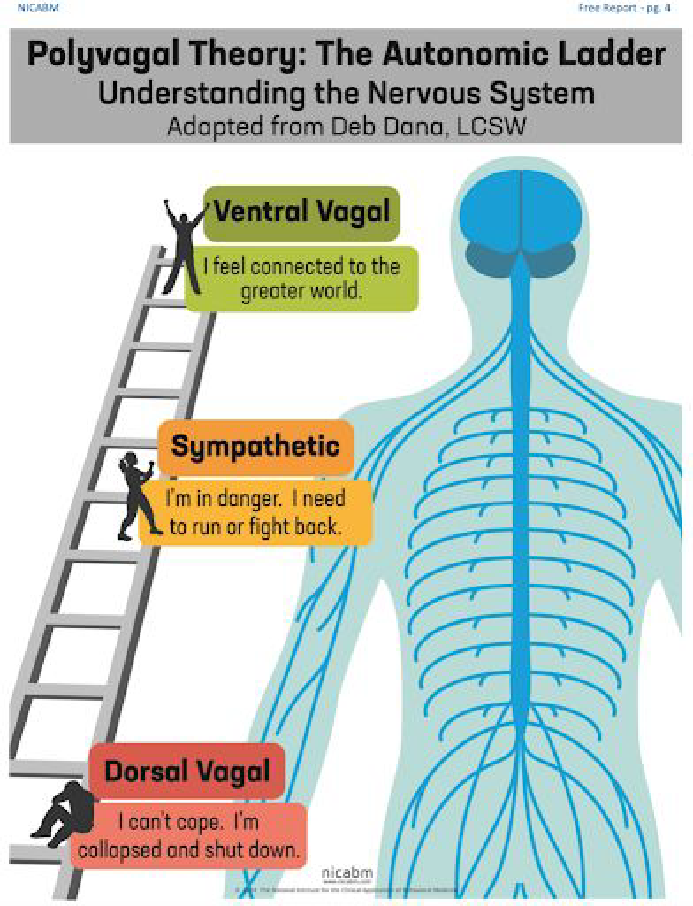Polyvagal Theory and the Autonomic Nervous System: The Science of Connection
Recently, Maegan has been studying the Autonomic Nervous System and its relationship to the treatment of trauma. Polyvagal Theory, the groundbreaking work of Dr. Steven Porges, shows us that how we react to cues of safety and danger in our lives is precognitive. This process takes place in the primitive parts of the brain, without our conscious awareness. Most of us can relate to feeling triggered or unsafe without knowing why.
“ Polyvagal Theory offers a framework to consider the reasons why people act in the ways they do. Through a polyvagal lens, we understand that actions are automatic and adaptive, generated by the autonomic nervous system well below the level of conscious awareness. This is not the brain making a cognitive choice. And with this new awareness, the door opens to compassion.” - Deb Dana
Prior to Polyvagal Theory, the autonomic nervous system was thought of as a two part system. You may already be familiar with these two parts: sympathetic fight-or-flight and parasympathetic shutdown, sometimes called freeze-or-faint. Both of these help us manage perceived threat.

Polyvagal theory identifies a third nervous system response that Porges calls the social engagement system, a playful mixture of activation and calming. This state is controlled by the ventral vagal nerve and requires a sense of safety. It helps us navigate relationships and allows for more flexibility.
The ventral vagal nerve acts as a braking system to the body’s regularly active state. Imagine stepping on the brake in your car: you can gently slow the car down to ensure the appropriate speed. Likewise, the ventral vagal nerve allows activation in a nuanced way, thus offering a different quality than sympathetic activation.

This understanding allows us to not only identify which state we are in, but to be an active participant in our nervous system. When we feel safe, we can use this vagal braking system to regulate our energy and meet the needs of the present moment.
However, due to past trauma, we may get stuck in either hypo or hyper-arousal states, which affect our quality of life.
“Being safer does not necessarily make us feel safer.” - Deb Dana
Maegan works with clients to help them develop an understanding of polyvagal theory, and to build a “tool kit” for how to befriend ourselves when we are in states of hypo or hyper-arousal, and gently shift.
Maegan has found that Acupuncture, bodywork, breathing exercises, movement, music and Gemmotherapy all offer tools to recalibrate the nervous system and help us respond to life with more ease.
References:
Deb Dana’s website: rhythmofregulation.com
Neuroception: spacebetweencounselingservices.com
Polyvagal theory in practice – Counseling Today:
ct.counseling.org
Polyvagal Theory: Trauma as Reptilian Freeze
attachmentdisorderhealing.com
PODCAST SERIES
Lauren Hubele and Maegan Lemp explore how Polyvagal Theory may guide us to better select Gemmotherapy extracts to build emotional resilience.

